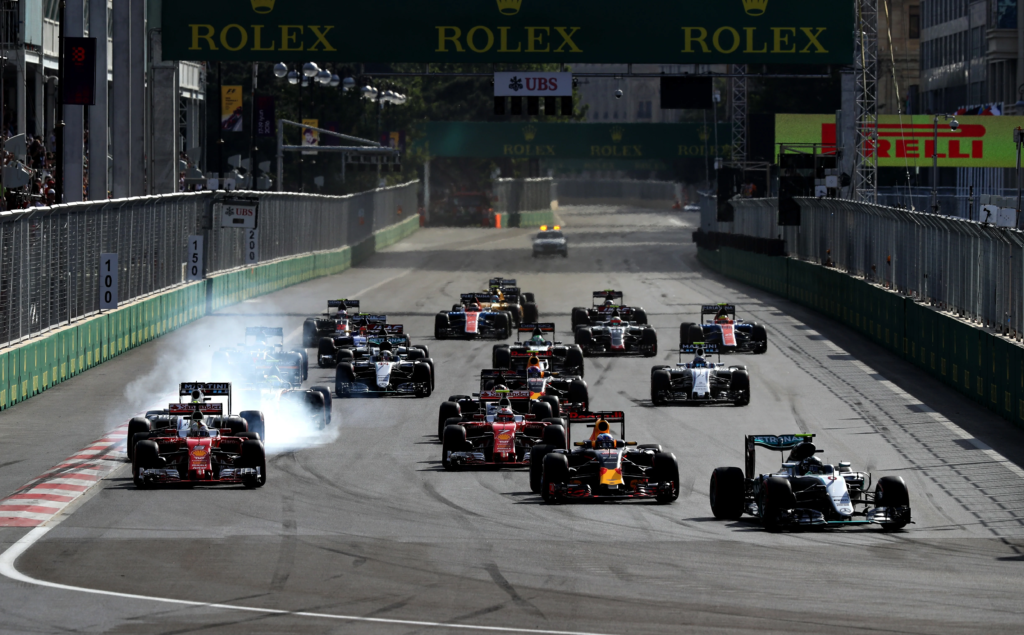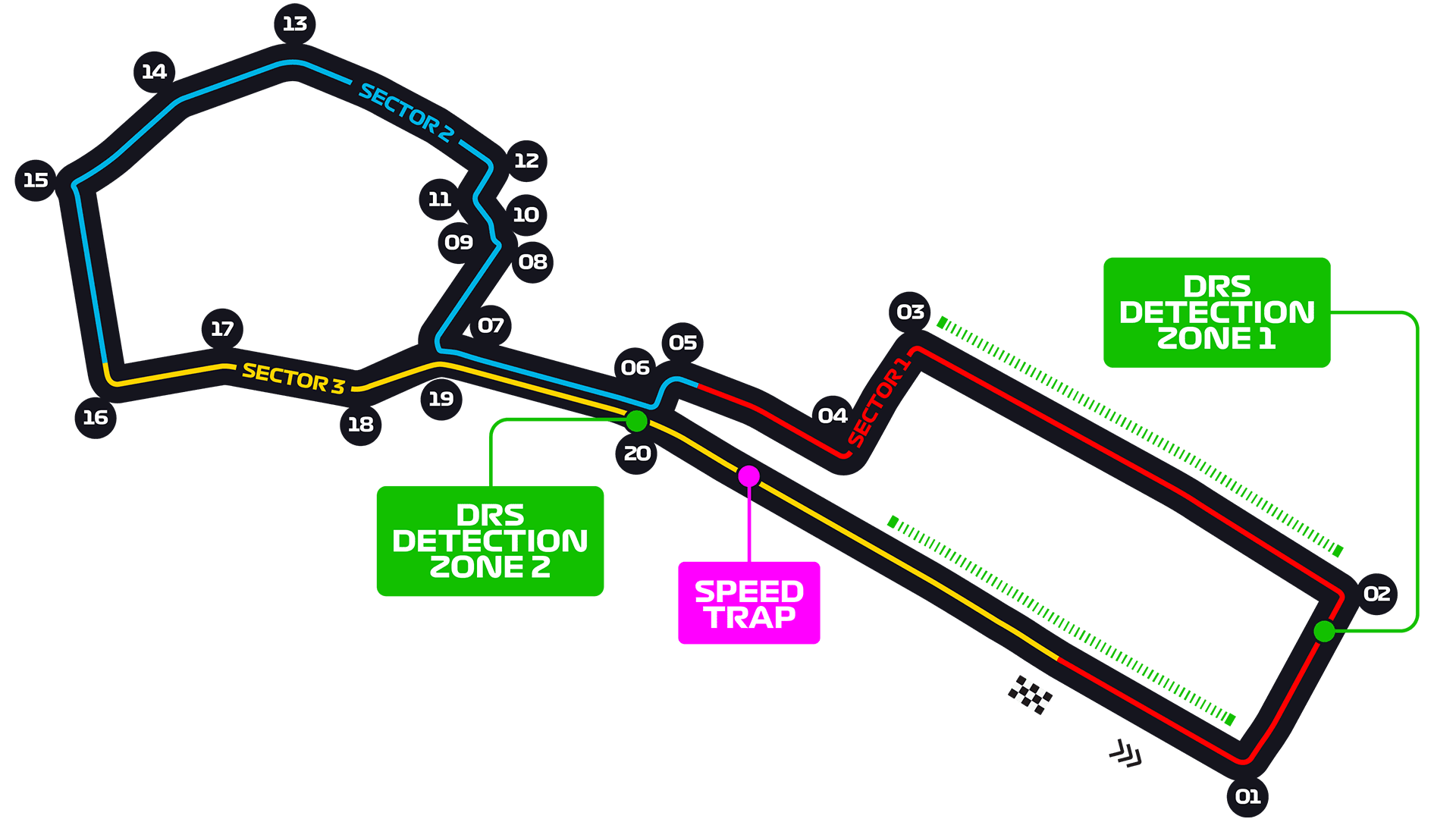Nestled amidst the historical charm of Baku, the capital city of Azerbaijan, the Azerbaijan Grand Prix Circuit stands as an epitome of how modern racing can intertwine seamlessly with ancient architecture. Since its inauguration, this circuit has quickly risen to fame.
The circuit’s blend of ancient city walls and ultra-modern racing facilities paints a vivid picture of contrasts. As the roar of the Formula 1 engines reverberate against centuries-old structures, it’s a stark reminder of how the sport has evolved yet remains deeply rooted in its rich heritage. The streets of Baku challenge the drivers with their fast-paced nature and also with their demand for absolute precision.
Beyond just the racing, the Azerbaijan Grand Prix offers an atmospheric experience. The azure Caspian Sea on one side and the iconic Flame Towers on the other, set against the backdrop of the city. As we delve deeper into its corners and straights, it becomes evident why this track is hailed as a tour of high speed and precision.
F1worldwide.com Recommends
- The Singapore GP: Everything You Need To Know
- Singapore Grand Prix – A Corner-by-Corner Guide
- United States GP – The Ultimate Guide
- United States Grand Prix Circuit – COTA Layout
- Mexican Grand Prix 2023: The Ultimate Guide
- Mexican GP – A Guide to the High-Speed, High-Altitude F1 Track
Characteristics of the Azerbaijan Grand Prix Circuit
Stretching for 6.003 kilometers, Baku City Circuit is renowned for its juxtaposition of long straights and tight, tricky corners. The circuit is essentially a high-speed track, especially considering the incredibly long main straight on the start-finish line.
Speeds in excess of 360 km/h (224 mph) have been recorded.
Tire degradation here is tricky. The combination of straight-line speed and technical sections demands a balanced tire strategy.

Soft compounds may provide grip in the technical sections, but they degrade quickly on high-speed zones. This is especially true with the heat from the tight confines of the city streets.
Key Sections of the Azerbaijan Grand Prix Circuit
Azerbaijan Grand Prix Circuit – Main Straight and Turn 1

The main straight, which leads into Turn 1, is the fastest section of the track. Here, cars can reach over 360 km/h before heavy braking into the first corner.
The G forces under braking can exceed 5G, pushing the drivers deep into their seats.
Azerbaijan Grand Prix Circuit – Turns 2 to 7
This section is characterized by a series of 90-degree turns, demanding precision and perfect placement. Braking is varied, with Turn 2 requiring a slow-down from high speeds and subsequent corners taken in quick succession.
The entry speeds can range from 100 to 180 km/h, with exits ramping back up as drivers prepare for the following straights.
Azerbaijan Grand Prix Circuit – Turns 8 to 12
One of the most iconic sections of any F1 circuit, the narrow sequence around the old city is breathtaking. Turn 8, in particular, is extremely tight.
Drivers are forced to slow down to as little as 80 km/h, navigating their way with millimeters to spare between the walls. The wrong line or a minor error can end their race instantly.
G-forces here are lower due to the slower speeds, but the physical and mental demands on the driver are immense.
Azerbaijan Grand Prix Circuit – Turns 13 to 16
After navigating the old city, drivers find themselves on another long straight leading to the challenging Turn 15.
The entry speeds here can again reach above 300 km/h before a heavy braking zone. Exiting Turn 16 correctly is crucial to ensure maximum speed down the subsequent straight.
Azerbaijan Grand Prix Circuit – Final Turns (17 to 20)

These corners are fast and flowing, with Turn 17 being a quick left taken at around 250 km/h. The last turn, Turn 20, requires precise braking and a tight line to ensure a good run onto the main straight.
Entry speeds are around 190 km/h and exits pushing back up to race speed.
Physical Demands on the Driver
Baku is not just mentally demanding but also physically. The combination of high-speed sections, heavy braking zones, and quick changes of direction means that drivers experience varied G-forces throughout the lap.
As mentioned, braking into the tight corners can push the G-forces to 5G, while lateral forces in fast corners like Turn 17 can be around 4G.
Conclusion
The Azerbaijan Grand Prix circuit in Baku offers a blend of high-speed adrenaline and technical challenges. Each corner tells its own tale and demands respect.
Drivers love the challenge, and fans are treated to a spectacle of speed, skill, and drama against the backdrop of a historically rich city. It’s an F1 destination like no other.

